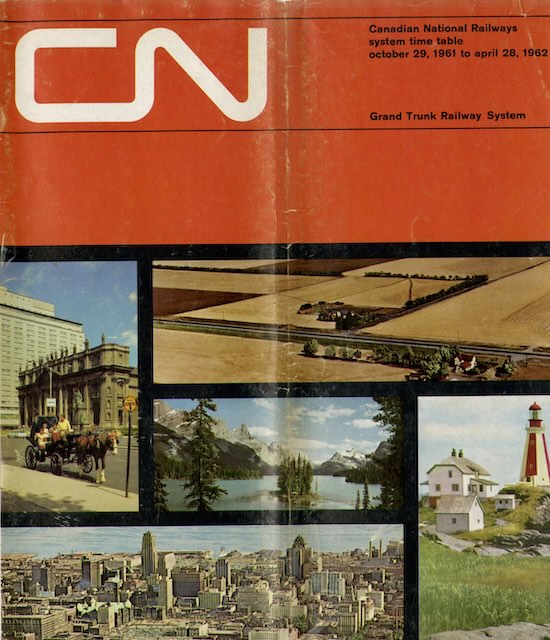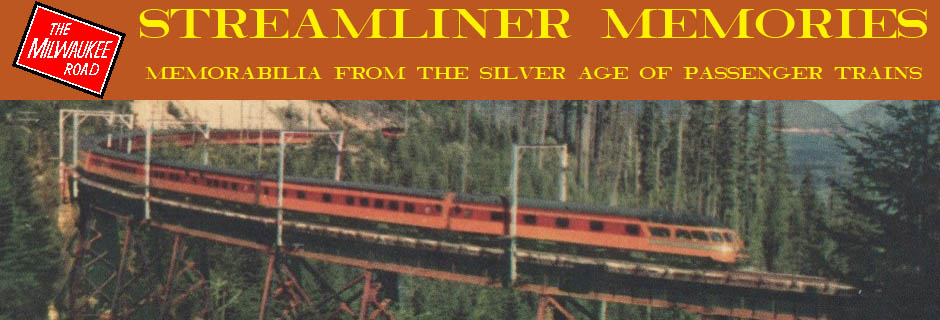Canadian National’s timetables dramatically shrunk in 1961. While the October 1960 timetable was still 84 pages, today’s is just 52 pages. In-between, the April 1961 timetable was 68 pages.
 Click image to download a 37.3-MB PDF of this 52-page timetable.
Click image to download a 37.3-MB PDF of this 52-page timetable.
The October 1960 timetable had about 170 different tables of CN train schedules. April 1961 had about 75, plus about 45 mixed-train services that didn’t actually have schedules, just mileages between stations. Today’s edition has about 90 tables, but no mixed trains. Ninety is a few more than 75 but still a big decline from the roughly 300 tables found in early 1950s timetables.
The page facing the inside back cover of this timetable features an ad for Trans-Canada Air Lines, something not found in the April 1961 edition. While air travel would be a major factor in the decline of passenger rail travel, this ad doesn’t directly compete with CN trains because it focuses on flights to London from Montreal, Vancouver, and other major Canadian cities.
Both Trans-Canada Air Lines and Canadian National Railways were state-owned companies. In fact, TCA was founded by CN in 1937. “The CNR was the country’s largest corporation at the time,” says Wikipedia, “and proved an effective vehicle for the government to create a national airline.”
In French, Trans-Canada Air Lines translated to Air Canada, and in 1965 TCA changed its name to that in both languages. It remained a part of CN until 1978 and was privatized in 1989, a few years before CN was privatized in 1995.
For those sitting on the edge of their seats wondering whether CN continued its all-inclusive, off-season rates in 1961, the answer is yes, those rates are mentioned in a large ad on the inside back cover of this timetable. However, unlike fall 1959 and 1960 timetables, this one doesn’t include the actual rates, so we can’t tell whether they were really a good deal or not.

Thanks as always for sharing these timetables and your insights with us.
Just to expand on the mixed trains, they reappeared in the main section of this timetable, ending what in hindsight looks like a failed 6-month attempt to redesign the timetable and downplay the mixed trains.
For example, mixed trains 211-212 covered the whistle stops along the transcontinental mainline from Armstrong to Sioux Lookout, Ontario:
* In October 1960, they were included in the main transcontinental tables (table 133);
* In April 1961, they were relegated to table 123, alongside the other mixed trains (as you noted), unnumbered and without timings en route;
* But in this October 1961 timetable, they’ve been restored to the transcontinental tables (now table 67).
…And likewise for most other mixed trains. One has to wonder whether CN got some pushback from customers for their experiment, and actually relented to the old arrangement (albeit with fewer net tables overall than before–and perhaps trains as well)?